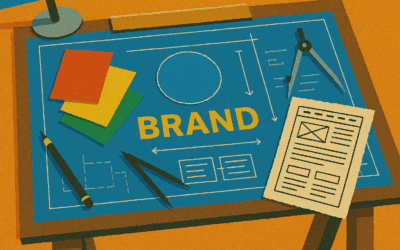In the vast marketing landscape, two terms often used interchangeably are advertising and promotion. While they share the common goal of reaching and influencing the market, they have distinct objectives and roles in the marketing mix. Let’s explore the differences between advertising and promotion and how understanding their unique objectives can help us employ these tactics more effectively.
Advertising: Captivating the End Users
At its core, advertising is targeted primarily at end users, those individuals who consume the products or services. It serves multiple purposes, including establishing awareness, providing informative content, and creating brand loyalty. In its role as an informational tool, advertising can effectively communicate or modify a product’s positioning and even promote new uses or benefits, as seen in the famous “Orange Juice isn’t just for breakfast anymore” campaign.
Moreover, while advertising primarily focuses on end users, it indirectly influences distribution channels. If advertising successfully generates interest and demand for a product, the distribution channels may become more inclined to carry it. This phenomenon is called a “pull strategy,” as advertising pulls the product through distribution channels. Additionally, advertising can be instrumental in building an overall brand identity, enhancing a company’s goodwill, and fostering positive perceptions among consumers.
Promotion: Embracing Diverse Tactics
On the other hand, promotion is a broader term encompassing various marketing communications that are not strictly advertising aimed at end users. It covers a wide range of promotional tactics. Let’s take a closer look at two distinct types:
- Consumer Promotions: These promotions are directly targeted at end users and often employ techniques such as special events, product sampling, rebates, coupons, and more. They are designed to entice and engage consumers by offering incentives or added value.
- Distribution Channel Promotions: These promotions are directed at resellers or other distribution channel members. They aim to motivate and incentivize the channels to push a company’s products. Examples of such promotions include training programs, trade allowances, cooperative advertising, and the provision of point-of-purchase displays.
Choosing Between Advertising and Promotions
When deciding between advertising and consumer promotions, it is crucial to consider the emphasis each places on different benefits. Advertising tends to focus on non-price benefits, highlighting product features, unique selling points, and emotional connections with the brand. On the other hand, consumer promotions are often more price-oriented and aim to provide tangible discounts, special offers, or incentives to encourage immediate purchases or trials.
Distribution Channel (Trade) Promotion: Pushing the Product
In addition to consumer promotions, marketing efforts also extend to the distribution channel or trade promotions. These promotions are directed explicitly at resellers or other distribution network members. They aim to provide incentives encouraging these channels to promote and push a company’s products.
Trade promotions can take various forms, such as offering trade allowances, conducting training programs for channel partners, implementing cooperative advertising initiatives, or providing eye-catching point-of-purchase displays. By offering these incentives, companies aim to build strong relationships with their distribution partners, increase the visibility and availability of their products, and ultimately drive sales. This strategy is commonly referred to as a “push strategy” since it focuses on pushing products through the distribution channel.
Maximizing Marketing Impact
While advertising and promotion are often used interchangeably, they serve distinct purposes within the marketing realm. Advertising primarily targets end-users, emphasizing awareness, information, and brand loyalty. It indirectly influences the distribution channels and employs a “pull strategy” to generate demand. On the other hand, promotion encompasses various tactics, including consumer promotions aimed at end users and trade promotions directed at the distribution channels, focusing on incentives and a “push strategy” to drive sales.
Understanding the difference between advertising and promotion allows marketers to strategically utilize these tactics to achieve their objectives. By tailoring their communication efforts to the intended audience and desired outcomes, businesses can maximize the impact of their marketing campaigns and effectively navigate the dynamic marketplace.
So, whether you’re crafting an advertising campaign to captivate end users, developing consumer promotions to entice buyers, or implementing trade promotions to push products through distribution channels, a thoughtful and targeted approach will ensure that your marketing efforts hit the mark.
Remember, a well-executed combination of advertising and promotion can propel your brand forward, foster customer engagement, and ultimately drive business success.



